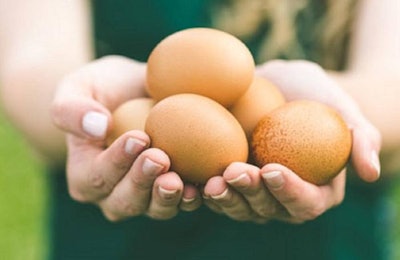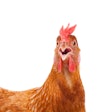
Any news relating to eggs over recent weeks has been dominated by the contamination of Dutch eggs with the insecticide Fipronil, but not so very far away from the Netherlands a landmark for those supporting cage-free production has gone largely unnoticed.
For the first time, the number of cage-produced eggs passing through U.K. packing stations is lower than the volume coming from non-cage production.
Figures from the country’s Department for Environment, Food and Rural Affairs reveal that eggs from enriched cages accounted for only 49 percent of those passing through packing stations during the second quarter of this year, the remainder being free range, barn or organic.
The number of enriched cage eggs packed was 3 percentage points lower than the same period last year, while the non-cage eggs was four percentage points higher.
The number of cage-free eggs passing through the UK’s egg packing stations has been gradually increasing over the last 10 years, but since 2011, growth has been slower and occasionally gone into reverse.
Almost the opposite has happened with caged eggs. 2006-2011 saw a continual decline in cage egg throughput, but then volumes started to rise.
Retailers or consumers driving change?
One quarter’s figures are not enough to definitively say that cage production will rapidly disappear, but it is worth remembering that last year, five of the U.K.’s major retailers that were still stocking cage-produced eggs committed to phase out sourcing from producers using cages. This quarter’s change could be an indication that those announcements are beginning to be felt in the field.
But there may be other reasons for this tip in the balance.
A survey last year found that 75 percent of U.K. consumers were prepared to spend more for eggs that did not come from cages, and despite the U.K., like other European countries, having abandoned battery cages some years ago, there are still consumer-focused campaigns to end all cage production.
But arguments have also been put forward that, rather than concerns about cage production and animal welfare or retailer pressure, what has brought about a shift in demand is the popularity of television baking programs, which have fostered consumer interest in what is perceived to be a better quality egg.
Cage-free, in the consumer mind, tends to be associated, rightly or wrongly, with health and quality, and the Fipronil contamination scare may act as a further driver in demand for cage-free egg producers in the U.K. and Europe, irrespective of the fact Dutch egg production is almost exclusively cage-free!
Comprehensive resource for cage-free eggs available
A new collection of exclusive articles, blogs and infographics on Cage-free Eggs and Consumer Trust in the Poultry Industry, written by trusted WATT Global Media editors and industry experts will equip egg producers and marketers with information to help them make critical business decisions. Purchase your copy.


















